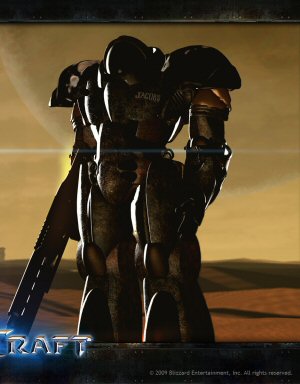In late 2017, the (then, and now formerly) celebrated independent game publisher Fullbright released its second game, Tacoma. Riding high from the incredible success of their first game Gone Home, Tacoma was a well-received second effort. While Gone Home is set in a large, barely-understood house that tells many underlying stories in addition to the main narrative driven by notes left by the protagonist’s younger sister, Tacoma evolved into a somewhat simpler tale about a future in space with misbehaving companies and AI, and some minor underlying portraits of the characters involved, rather than stories; set on an Earth Lagrange Point space station recently abandoned due to a mysterious accident. Only a few months later a “small group of developers” called “The Station” published the game “The Station.” About a mystery on a satellite orbiting the Earth at some point in the future. There was some accident that caused the staff of the satellite station to shut down and possibly abandon ship. Both games advertised use of an “augmented reality” system to explore the environment and figure out what happened.
Other than that, neither title actually has anything to do with the other. No, really; they tell entirely different stories from different points-of-view. The augmented reality systems are different. In fact, The Station‘s AR is…kind of pointless, honestly? You could have done the entire game without even mentioning it was a feature, as it doesn’t use the “augmented reality” functionality for anything important. By contrast, exploring the augmented reality records of Tacoma is central to the gameplay.
The setup for each game is remarkably similar, however. Tacoma starts with a first-person view approaching the Lunar Transfer Station Tacoma, then docking with it. You (Amy, the character you play as) are informed by your ship’s AI Minny that the crew of Tacoma have evacuated and the station’s AI is off-line. There is enough breathable air on the station for you. The implication is that the air is compromised in some way, but should be acceptable for you to complete your mission. And your mission, you soon find out, is to retrieve the Tacoma’s AI Odin for the station’s owner, Venturis.
The Station opens with some narration and still images about encountering alien life somewhere in the universe followed by the discovery of said alien life on another world and the debate over whether to observe or even attempt an encounter with said alien life. However this segment is a short prologue as a short bit of animation states that a space station was sent through timewarp (warp speed, hyperspace, however you want to think about it) to silently (and invisibly) monitor the alien species, as there was some indication this species might be violent. Not long after, reports of an accident shutting down the station’s stealth field were received, followed by reports that the native alien species had become aware of the station. You, an unnamed recon specialist, are sent in a small ship through timewarp to assess the situation and report back. This last bit is imparted as you approach the station in space above the night side of an alien world dotted with light…and the occasional explosion visible from space. As with Tacoma, you are tasked with docking and then exploring the space station, although you have no fetch quest.

Once you get inside the respective stations, though; the gameplay changes significantly. You dock with, and initially move through, Tacoma’s central hub as the various arms that lead to the different areas of the station rotate around you. This is actually a fairly realistic design; something Earth could build now if we had a need. We immediately see hand-made signs prompting us to the far end of the central hub to the observation dome, at which point we are prompted to activate our Augmented Reality interface to see a recording Tacoma’s AI, Odin, has for this area. That recording prompts us to visit our first area down one arm. This is the central mechanic of the game: reaching the appropriate spot to play these recordings. Since the records played through the AR actually show people’s avatars moving through the environment, and even visiting different areas at different times, you can follow one person to get their entire story recorded for that entry. As you view different people, they sometimes have connected documents pop up that you can view for more background or story elements. Different sections of the area you are in may have other recordings available, but these are typically characterization moments. You will sometimes have to pick something up, keys in a couple of instances, and carry them to the locks they affect. If I remember correctly, these moments are all for extra content, not to move the story along. The main story is told solely through the AR recordings.
The space station in The Station is named Espial and it is both far more futuristic-feeling than the Tacoma and bizarrely littered with more junk. It’s also much larger, which feels really weird when you discover it was crewed by only three people, as opposed to the far-smaller Tacoma’s six. The augmented reality functions are little more than heads-up-display menu access. Considering this is a fairly common interface, I don’t think this really counts. Many games do the exact same thing. Some give it a name; most don’t anymore…it’s just the way menus work. As with Tacoma, there are various recorded messages left around the station. However, this are short character-building moments and audio-only. They don’t, in and of themselves, advance the story at all. For that you have read various documents left lying around the station. Progressing through the story occasionally requires solving a puzzle. For the most part, though; through trial-and-error you open everything open-able, click on everything clickable, and read everything readable until you find something somewhere that tells you “you need X in order to Y.” Then you go find X and figure out where to put it. And while the central story of Tacoma is a fetch quest technically, only in The Station will you have to collect a handful of items to stow in your inventory.
THE BIT WITH SPOILERS IF YOU THINK YOU WANT TO PLAY EITHER OF THESE GAMES

In Tacoma, the first AR recording you retrieve right at the beginning of the game sets the stage. Four days prior to your own entrance in the story the crew of the Tacoma were about to celebrate an Obsolescence Day party. All members of crew were leaving at the same time to be replaced by an entirely different crew. During the party an accident occurs that both ruptures most available oxygen canisters and disables all communication. The six crew-members split up (sort of) to try to repair the damage. When they find the damage cannot be repaired, they come up with an alternative plan: as they complete tasks, members of the crew will enter cryogenic pods to reduce oxygen usage. For example, the commander does so after the plan is decided on, having no further tasks to complete. The biologist releases oxygen-producing algae to add to the oxygen supply, then enters freeze himself. The remaining crew begin working on adapting the station’s unmanned drone ship to carry them directly to the moon. The medic begins scanning everyone to make sure they can enter cryosleep, but discovers the network specialist has a heart problem. She clears the technician anyway knowing they will surely die if they stay on Tacoma. This entire process actually takes days; as you get down to the last twenty-four hours of recordings another explosion occurs on the drone ship injuring the network specialist and engineer. Odin, Tacoma’s AI, prompts the medic to get access to restricted areas from the network specialist who has that access, as the medic is the only capable person left. This leads her to discover the entire event was largely faked by the AI under orders from the CEO of Venturis. The medic is able to restore oxygen and communications of her own volition thanks to Odin finally finding a way around his orders. This is all the culmination of several subplots introduced in various documents in the story involving the Orbital Workers Union having enough influence to stop Venturis’ plan to build and operate completely-AI-managed housing in orbit around Earth. When Venturis’ attempt to get the government to force the project is rejected, Venturis’ own AI system is assigned to come up with solutions to rectify the vote soon. The AI, Juno, comes up with the idea of an unavoidable accident on the prominent-but-aging Tacoma Lunar Transfer Station that would kill all staff members. The only reason this “automated” station has people is because of the Union; if there were no people no one would have died. The Juno AI computes that this situation would provide enough incentive for the government to ignore the Union and allow Venturis to build its housing project. The medic broadcasts the records involved and issues a request for help. Venturis’ biggest competitor (Carnival, lol) sends a rescue ship. The crew will have to spend several months in a somewhat-autonomous colony, but they are alive. The medic also contacts a member of a renegade pro-AI movement to help get the AI Odin off Tacoma before Venturis can re-program him or even destroy him. And the biggest twist at the end is that you, Amy, the courier sub-contracted by Venturis to retrieve Odin, are actually a member of the AI movement as well and have essentially just liberated Odin under Venturis’ nose. The various other records and objects you encounter optionally flesh out the characters as well as providing the basis for these other stories about Venturis and the A.I. Liberation Front, AILF.
There is one major story in The Station and a handful of red herrings. The items and records you interact with throughout are meant to illustrate the characters, but this does little for the story other than one character being a distraction option. I’ll skip the dead ends; only one impacts the story but considering even that one is cut off right at the end, it’s not really important. You start the game thinking you’re visiting a dead and possibly derelict station, intent on find out what happened. But discover quickly (in the story’s timeline) that there are OTHER PEOPLE STILL ON THE ESPIAL. The first one you encounter runs from you, but you soon start hearing the voices of the crew shouting messages to each other on the coms…either you’re going crazy or the people you have been sent to find ARE ALSO still on the Espial…somewhere. Now here’s the thing: because you basically have to explore everything until you stumble on the element you need to solve to access some areas, you don’t necessarily experience all of the story elements linearly. And if you don’t, you can only piece together the story after you’ve completed the game. That’s not an issue in Tacoma; Fullbright made sure you got the story straight. It turns out only HOURS before the game starts for you, the Espial experienced a malfunction that exposed the station to the planet being observed. This resulted in the observed alien life boarding the Espial only minutes before you did. Now you don’t LEARN the timeline was that compressed until the latter part of the game, as it’s meant to be a surprise. But a lot of what happened in the first half of the game seems silly in retrospect once you learn that. The fact that you may spend thirty minutes or more solving a problem that’s supposed to take place over the course of SECONDS starts being present in your mind in the last chapters of The Station. So The Aliens attack and board the Espial. The three crew members rush to delete all records and data, and set the self-destruct, before using the escape pods. One by one they are cornered in their task and die completing their jobs. At the very end, the commander kills an alien, taking a fatal stab wound herself, and dies just after prepping the escape pod. You use the escape pod just as another alien cuts their way into the room you’re in, and you rocket away only seconds before the alien reaches you, and the Espial explodes. The final audio recording from the commander: The Earth isn’t worth it. Forget about the Earthlings, they are too violent. They can’t ever know about us! As you accelerate away, the planet being observed rotates into the light, and we see a scarred and destroyed Earth with minimal oceans and massive explosions occurring all over the planet.

While the twist-ending of “you were the alien all along!” and “Earthlings violently kill everything” is poignant (and actually connects to the opening narration), the less-structured gameplay can lead to a frustrating experience with The Station. The lack of polish and poor implementation of the interface is felt regularly, as well. In contrast, Tacoma may hand-hold you through the main story, but as the focus of the game *is* telling the story, this works in Tacoma‘s favor. The Station could have used more structure, but there’s honestly just not enough to the game to justify doing so. Both Tacoma and The Station can be completed in hours if you want; or a couple of leisurely days if you don’t spend much effort. But if The Station was more linear…you could easily experience the game in thirty minutes. An hour if you take your time. That’s a freebie in most books, but this game wasn’t presented as such. It doesn’t surprise me that the development team (as far as I can tell, anyway) never did anything else. At least Fullbright had a management problem that caused their third game to move to a different studio (Open Roads; I’ll talk about it soon. And yes, that means Tacoma was then Fullbright’s second and currently *last* game.)
Tacoma is loaded with detail that I didn’t get into. There are tons of hints dropped about Odin’s actions and thoughts. Both the network specialist Nat and the medic Sareh, for different reasons, worked with Odin on his individuality. The nature and history of AI is talked about in several places. Beyond that, who each of these people are and what they are bringing to the story is discoverable for each character. Tacoma is thoughtfully planned and easy to play. It’s easy to replay. The Station has an interesting if not unique premise, but fumbles the execution. It is *not* easy to play, but even then when you know what’s going on a replay seldom takes more than twenty minutes. The discoverable characterization seems primarily meant to make you question which of the three crew members made a mistake that caused the problem, or even intentionally exposed themselves to the Earthlings. This idea is either dropped or entirely contradicted by the end of the game, leaving you wondering what the point of most of your actions was.
I do recommend Tacoma; it’s a worthy follow-up to Gone Home. You can find out about the problems with the studio on Fullbright company’s Wikipedia entry; you may want to do that in case you have a problem sending any money their way. I bought the game while Open Roads was still in development at Fullbright, and before the problems were made public and the project moved to another studio. The Station I can only recommend at a *very* low price point, if not absolutely free. The last few minutes of the game is handled well, but getting to that point will challenge your interest and dedication.
Batman: Arkham Origins

A breakdown of how this game faltered when the franchise was given to a different studio.
Mass Effect 3 Ending Deconstruction

Did you dislike the ending to the Mass Effect trilogy? Here's my list of where it failed logically, thematically, and tonally.
Silver Sable Sucks

This version of Silver Sable is poorly designed, horribly written, and placed in the game for all the wrong reasons.
Are Lootboxes Gambling?

Obviously they are. Right? Actually, is this another one of those sneaky hard-to-define things?
Starcraft: Bot Fight

Let's do some scripting to make the Starcraft AI fight itself, and see how smart it is. Or isn't.
 T w e n t y S i d e d
T w e n t y S i d e d

As always, I enjoy your commentary and insight in to games.
It is interesting how similar movies seem to come out near each other. While there are many games released every month, the fact you can swap descriptions to two different games is amusing. The genre isn’t exactly up there with ‘retro, pixel, puzzle-platform’ or ‘military shooters’ where there’s multiple coming out every month. Games going for this level of storytelling are relatively uncommon.
Thank you for introducing these games and for the caveats.
Thank you for the comments!
For once, I’ve actually played the games under discussion! That’s so exciting!
Personally, I enjoyed The Station more than I did Tacoma mostly because it’s actually got some adventure-game-like puzzle aspects to it. Tacoma is the better story and is better told, but it’s too much of a “walking simulator” for me and I struggled to really find the “game” in the experience. And I think, for me, Tacoma was a bit of a victim of its hype, setting the expectations higher or different from what the game was intended to deliver.
I don’t regret playing either, though. That said, I agree that The Station is an experience that’s short enough only to justify spending a few bucks on, and the polish behind Tacoma makes it worth a couple bucks more, but I don’t think I’d pay the non-sale going rate for Tacoma either.
I certainly can see someone viewing the two games that way. I tend to like the walking simulator story experience games, so my views tended to favor Tacoma. And I do also agree that Tacoma suffered from high expectations. Gone Home was a highly-lauded game, and regardless of Tacoma’s technical quality it is shorter and less impactful.
A bit late to the party but still. unlike AvWolf I remember enjoying Tacoma more, although that may be clouded by the fact I played Tacoma soon after release and The Station… I think late last year? My point is nostalgia may be a factor. It probably doesn’t help that despite The Station trying to cover it something (don’t remember what) tipped me off to the twist early so from that point I wasn’t as invested in learning about this “aggressive alien race” and it lacked the environmental and character richness of Tacoma.
It’s pretty easy to figure the “twist” must be true early on because they keep talking around it. Not far into the game you can see the hole that’s left.